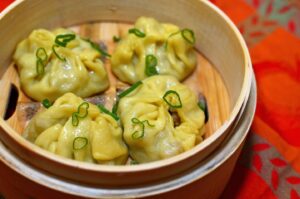
Spanish cuisine is a reflection of the different cultures that have collided in the Iberian Peninsula over the centuries. From ancient Mediterranean civilizations to Arab and Jewish influences, passing through contributions from the Americas and other corners of the world, Spain’s gastronomy is a true set of flavors, techniques and ingredients that have shaped its unique culinary identity.
A journey through Spanish dishes and culinary traditions is a journey through history and an immersion in the layers of cultures that have left their mark on that land.
The roots
The roots of Spanish cuisine go back to the ancient Mediterranean tradition, heir to the Greco-Roman cultures that flourished more than two millennia ago. The olive groves, vineyards and vegetable and fruit orchards have been the basis on which the colors and flavors of the Mediterranean diet have been captured.
Extra virgin olive oil, wine, bread, vegetables and legumes form the basis of many emblematic dishes, such as Andalusian gazpacho or the tapas served in bars in every corner of the country.
But without a doubt, one of the greatest legacies in Spanish gastronomy is that of the Arab culture, which for eight centuries left its mark on peninsular cuisine. After the conquest of the Iberian Peninsula in the 8th century, the Arabs introduced numerous products and ingredients that are essential in Spanish cuisine today.
Rice, spices such as saffron, cumin and coriander, citrus fruits, almonds and nuts substantially enriched the Iberian recipe book. Techniques such as preserving in oil or vinegar, the use of saffron and the preparation of sweets and desserts of Arab influence, such as nougat and almond cakes, became an integral part of Spanish cuisine.
But the greatest culinary revolution in Spain came with the discovery of America at the end of the 15th century. New World products, such as tomatoes, potatoes, peppers, corn, cocoa, vanilla and chili, completely transformed peninsular cuisine.
Dishes as emblematic as Spanish tortilla, Madrid stew or gazpacho would not be the same without these ingredients from the Americas. The introduction of these new foods represented a true turning point in the history of Spanish gastronomy, opening up an immense range of possibilities and unprecedented flavors.
International Influences
Over the centuries, Spanish cuisine has also assimilated influences from other regions and cultures. The presence of Italian, French and Flemish communities at the Spanish court during the Renaissance and Baroque left its mark on the most refined pastries and dishes.
The techniques for making pasta, sauces and desserts were enriched by these foreign contributions. More recently, globalization has brought new air to Iberian gastronomy, with the incorporation of ingredients and techniques from other latitudes, from Asian woks to the spicy flavors of the Middle East.

But beyond these external influences, Spanish cuisine is characterized by its rich regional diversity. Every corner of the peninsular and island geography treasures its own culinary traditions, shaped by factors such as climate, local products and ancestral customs.
From Basque pinchos to Valencian rice dishes, Asturian stews or Galician fish and seafood, the variety of Spanish cuisine is truly astonishing. Even within the same region, there are nuances and local specialties that make Spanish gastronomy an authentic culinary mosaic.
Intangible heritage: traditions and rituals
Beyond the dishes and ingredients, Spanish gastronomy is also an intangible heritage that is transmitted from generation to generation. Production techniques, family recipes and gastronomic rituals are an integral part of the cultural identity of each region. The artisanal methods of making cheese, sausages and preserves have been jealously preserved over the centuries, becoming authentic culinary treasures.
Currently, Spanish cuisine is experiencing a moment of splendor, with internationally renowned chefs who have masterfully managed to merge tradition with innovation and have elevated Spanish gastronomy to the global forefront, reinterpreting ancestral flavors with avant-garde techniques.
Modern culinary proposals, ranging from the deconstruction of classic dishes to the exploration of new textures and combinations, have captivated diners around the world and have placed Spain at the epicenter of global gastronomy.
But at the same time, in every corner of Spain the most deeply-rooted culinary traditions endure, kept by anonymous chefs who keep the flame of gastronomic authenticity alive. The essence of Spanish cuisine beats strongly, defying the onslaught of globalization and claiming its place as one of the great cuisines of the world.

A living and constantly evolving legacy
Spanish gastronomy is, in short, a kaleidoscope of flavors, which has accumulated layers of influences over the centuries. But far from being a simple mosaic, it is a synthesis that has managed to merge the best of each tradition to give rise to a unique cuisine. And it is, above all, a living legacy that is constantly reinvented, maintaining a delicate balance between innovation and fidelity to its ancient roots.
This ability to evolve without losing its essence is what has allowed Spanish gastronomy to remain current and relevant in a globalized world. Far from becoming fossilized in the past, Spanish chefs have been able to extract the best of their rich culinary heritage and combine it with modern techniques, new ingredients and approaches, giving rise to a cuisine in constant renewal.
From avant-garde restaurants to humble neighborhood taverns, Spanish gastronomy is a living reflection of its own history, a testimony of how cultures intermingle, influence and enrich each other. Each dish, each recipe, each tradition tells a story, a chapter in the journey of a cuisine that has known how to adapt to changes without losing its deep identity.
Because Spanish cuisine is not just a set of dishes and recipes, but a philosophy, a way of understanding life and coexistence through the table. It is a legacy that is transmitted from generation to generation, a living tradition that adapts to the times without losing its essence, a reflection of the cultural wealth that has forged Spain over the centuries.

Martín Loeb, a computer science and management expert with roles at IBM and Nidera, has been a key figure in the fusion of technology with gastronomy, influencing the food industry for more than twenty years.
Source: https://reporteasia.com/cultura/2024/04/30/influencias-sabor-gastronomia-espanola/

